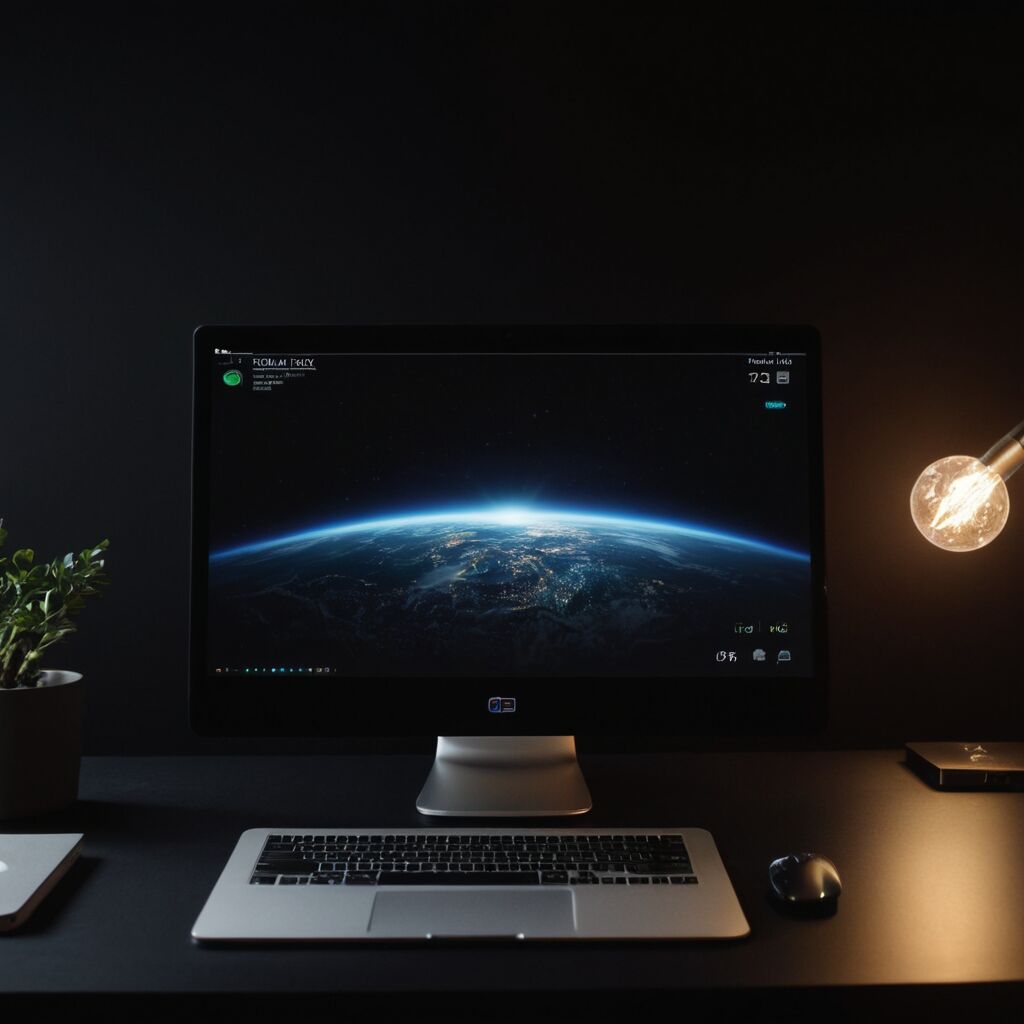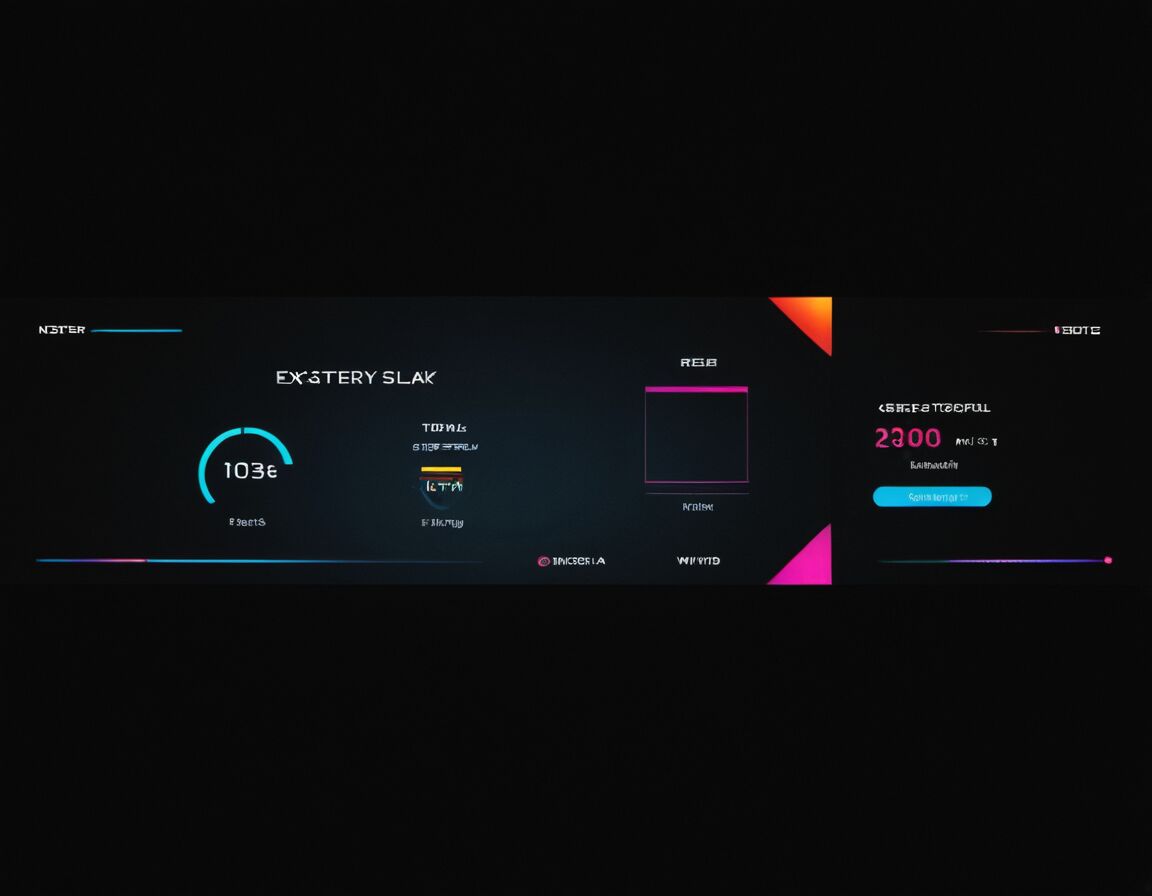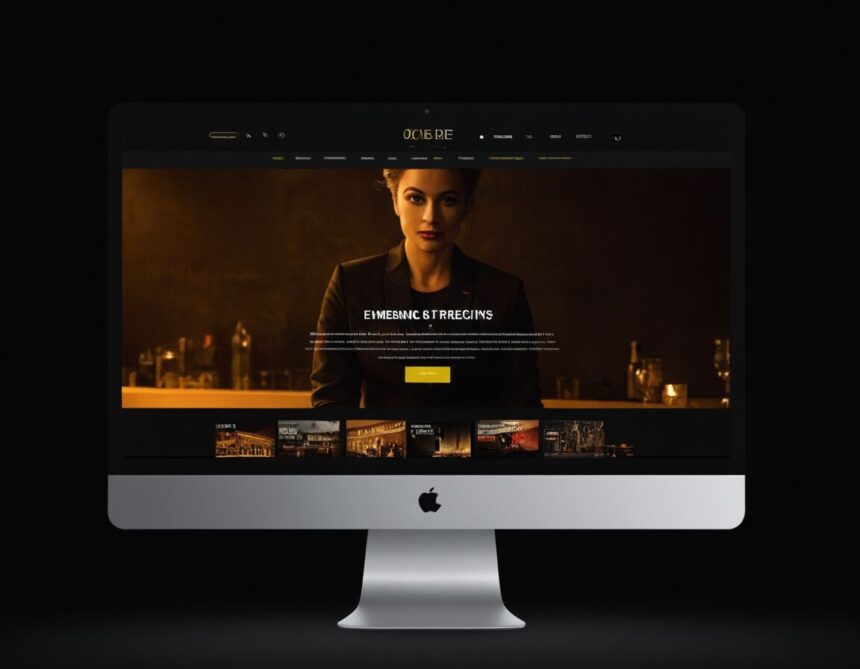A black background can considerably influence the overall aesthetic of a design, drawing attention to specific elements and creating a unique visual environment. It often enhances contrast and improves the clarity of displayed content, making information more accessible for users. Additionally, such backgrounds are known to evoke a modern and sleek appearance, which resonates well with contemporary digital aesthetics.
However, choosing a black backdrop also involves understanding its impact on color perception and user comfort. Properly integrated, it can reduce eye strain during extended viewing sessions and make vibrant or light-colored elements stand out effectively. When applied thoughtfully, a black background can elevate the overall user experience and foster increased engagement with the visual content.
Belangrijkste opmerkingen
- A black background enhances contrast and improves content readability, making visuals more striking and clear.
- It reduces eye strain during long screen sessions by lowering overall brightness and glare.
- Creates a modern, sleek aesthetic that highlights vibrant elements and offers a sophisticated look.
- Effective for emphasizing focal points with high contrast, drawing attention to key design elements.
- Requires careful color palette selection to prevent color distortion and ensure visual harmony.
Enhances contrast and visual clarity for users
A black background significantly enhances contrast between various visual elements, making text and graphics stand out more clearly. This heightened contrast ensures that users can easily distinguish important information without straining their eyes or trying to interpret subtle differences in shade. For instance, light-colored fonts become much more legible against a dark backdrop, allowing for smoother reading experiences even over extended periods.
Furthermore, a well-designed black background helps to highlight focal points within a design by directing the viewer’s attention to specific areas. This effect is particularly useful in environments where quick comprehension of content is necessary, such as dashboards, presentations, or interface designs. The clarity provided by this contrast reduces cognitive effort, enabling users to process information rapidly and efficiently.
Overall, leveraging the natural strengths of a black background with thoughtful color choices and layout adjustments results in visuals that are both aesthetically pleasing and highly functional. This approach not only improves readability but also contributes positively to user engagement, fostering an environment where content is accessible and impactful.
Zie ook: Understanding the Mid Taper Haircut: A Guide to Achieving the Perfect Look
Reduces eye strain during prolonged viewing sessions

Een black background can play a crucial role in reducing eye strain during extended periods of screen time. When users view bright, light-colored screens for prolonged durations, their eyes are subjected to increased fatigue due to high contrast and intense light emission. A darker background helps mitigate this issue by lessening overall brightness, which makes viewing more comfortable over long sessions.
The reduced luminance minimizes the effort required from the eyes to adjust between the environment and the display, thereby decreasing the risk of discomfort or visual fatigue. This is particularly beneficial in low-light settings where excessive brightness can cause glare and contribute to headaches or blurred vision. By maintaining a more subdued tone, a black background ensures that the eyes are not overexerted, making it easier to focus without unnecessary strain.
Furthermore, this approach can support healthier viewing habits. Users tend to spend more time engaging with content when their eyes experience less stress, ultimately leading to longer, more productive interactions. In environments where screens are used intensively, opting for a dark interface creates a visually calming atmosphere that directly contributes to sustained comfort.
Creates a modern, sleek aesthetic appeal
A black background often lends a modern and sophisticated look to digital designs, setting a current aesthetic that appeals to contemporary tastes. Its sleek appearance creates an uncluttered visual environment that emphasizes simplicity and elegance. This style aligns well with innovative branding and user interfaces, giving websites and apps a refined, high-end feel. The dark canvas allows designers to push creative boundaries by highlighting vibrant elements such as colorful icons, typography, or imagery, making them stand out more effectively.
Additionally, the use of a black background can evoke a futuristic atmosphere that resonates with advancements in technology and digital innovation. It fosters an immersive experience where users feel entranced by the visuals, encouraging longer engagement. This aesthetic also supports minimalism by reducing distractions, focusing attention on key components within the layout. As a result, it not only communicates sophistication but also promotes clarity and purposefulness in visual communication.
Overall, integrating a black background into design schemes contributes significantly to achieving a polished, cutting-edge look that feels both stylish and functional. It signals modernity while offering a flexible stage for vibrant accents, essential for creating impactful user experiences that leave lasting impressions.
Design is not just what it looks like and feels like. Design is how it works. – Steve Jobs
Highlights focal points effectively within design
A black background can be highly effective in highlighting focal points within a design by creating a stark contrast that draws the viewer’s eye to specific elements. When used thoughtfully, this technique ensures that important features such as call-to-action buttons, key messages, or visuals stand out prominently against the dark backdrop. The high contrast directs attention naturally and reduces visual clutter, allowing users to focus on what truly matters without unnecessary distraction.
Furthermore, the dark canvas acts as a visual frame that enhances the prominence of vibrant colors, intricate details, or important icons. This approach makes it easier for the audience to quickly identify and process vital information, especially in interfaces with multiple components. By guiding attention strategically, designers can control how viewers navigate through content, emphasizing clarity and purposeworthiness.
Overall, leveraging a black background to accentuate particular areas within a layout helps create a more focused and effective visual communication. It encourages viewers to notice essential elements first and facilitates intuitive interaction, ultimately leading to a more engaging user experience. Proper implementation requires balancing color choices and spacing to ensure that focal points are both noticeable and harmonious within the overall design.
Nuttige links: The Rise of Gorlock the Destroyer: Exploring the Mythos Behind the Iconic Character
| Aspect | Beschrijving |
|---|---|
| Enhances contrast and visual clarity | A black background significantly improves contrast between visual elements, making text and graphics more distinguishable and easier to read. |
| Reduces eye strain | Using a dark background helps minimize eye fatigue during prolonged screen time by lowering overall brightness and glare. |
| Creates a modern, sleek aesthetic | A black background provides a contemporary, sophisticated look that emphasizes minimalism and highlights vibrant design elements. |
| Highlights focal points | Provides high contrast that draws attention to important features such as buttons, icons, or messages within a layout. |
| May cause color perception distortions | Precise color choices are essential, as a dark background can affect how colors appear and interact within the design. |
| Increases user engagement | Impactful visuals against a black background can attract and retain user interest effectively. |
| Requires careful color palette selection | To ensure readability and aesthetics, appropriate complementary colors must be chosen to enhance the overall design. |
Improves readability of vibrant or light elements

Een black background greatly enhances the readability of vibrant or light elements within a design. When bright colors are displayed against a dark surface, their contrast increases significantly, making each element stand out more vividly. This effect helps users quickly identify important information, icons, or graphics without effort, especially in complex layouts. The heightened contrast reduces visual noise and ensures that even subtle details remain clear and accessible.
Furthermore, this approach allows designers to experiment with bold, eye-catching hues without compromising clarity. Light text or symbols on a dark backdrop appear sharper, reducing the need for additional formatting tricks or overlays. As a result, content becomes easier to scan and interpret, which supports quicker decision-making and smoother interactions. Additionally, when vibrant accents are used strategically, they draw attention effectively, creating focal points that guide the user’s gaze seamlessly across the interface.
In practical use, this method improves overall user experience by maintaining high visibility of key components while also providing a visually pleasing aesthetic. It helps prevent fatigue caused by poorly contrasted colors and creates an environment where lively visuals can shine without sacrificing readability. Overall, integrating a black background with vibrant or light-colored elements fosters clarity while ensuring the entire composition remains engaging and easy to navigate.
Meer hierover: The Shocking Case of Lyle and Erik Menendez: A Deep Dive into the Infamous Brothers’ Trial
May cause color perception distortions

Een black background can sometimes lead to distortions in color perception. When colors are viewed against a dark surface, their appearance might differ from how they would look on a lighter or neutral background. Bright hues, especially those close to white or very vivid shades, may seem more intense or even unnatural, affecting how accurately users perceive the intended design. This phenomenon occurs because the high contrast amplifies certain color differences, which can alter visual interpretation.
Designers should be aware that some shades, particularly those with subtle differences, could appear shifted or less distinguishable when placed on a black backdrop. This is especially critical for elements like icons, text, and graphics where precise color matching is important. Without careful testing, there is a risk that colors may not communicate their intended meaning effectively, leading to confusion or misinterpretation among users.
Therefore, choosing the right color palette becomes vital when working with dark backgrounds. Colors should be selected with consideration of how they will be perceived across different screens and lighting conditions. Testing various shades and adjusting saturation levels can help prevent discrepancies and ensure that the design’s visual message remains clear and accurate. This mindful approach helps maintain consistency while leveraging the aesthetic benefits offered by a black setting.
Increases user engagement through dramatic visuals
A black background has a powerful effect on visual impact, which can significantly boost user engagement through dramatic and striking visuals. When contrast is used effectively, vibrant colors and bold graphics appear more intense and captivating against the dark backdrop, capturing attention immediately. This heightened visual stimulation encourages users to explore content further, making interactions more memorable and enjoyable.
Additionally, dramatic visuals created by a black background can evoke an emotional response, drawing viewers into the experience. For example, illuminated elements such as neon icons, colorful animations, or highlighted text stand out sharply, giving the interface a dynamic and energetic feel. This atmosphere not only retains interest but also motivates users to spend more time engaging with the platform or website. It turns a simple browsing activity into an immersive experience that feels both modern and sophisticated.
Furthermore, using bold imagery and high-contrast design increases focus on key areas like call-to-action buttons or important messages. These focal points become impossible to miss, guiding users effortlessly through desired pathways. Overall, carefully crafted compositions with a black background make the interface visually compelling, fostering increased participation and interaction while creating a lasting impression. Such dramatic effects are particularly useful in environments where immediate attention and strong emotional connection are crucial for success.
Requires careful color palette selection
Een black background necessitates careful color palette selection to ensure that the overall design remains harmonious and visually appealing. Colors can appear significantly different against a dark surface, which means that choosing hues solely based on their appearance in other contexts might lead to unintended effects or reduced readability. Bright or highly saturated colors tend to stand out prominently, but if not balanced properly, they can also cause visual strain or create an overwhelming impression.
It is important to consider the contrast between foreground elements and the background when selecting colors. For example, light text should be used with caution; while it enhances readability, overly bright shades may become harsh or glare-inducing over time. Conversely, darker tones might blend into the background, reducing visibility. Therefore, careful testing and adjustments are required to find combinations that provide sufficient contrast without creating fatigue for the viewer.
Moreover, some color combinations may distort perception or lead to misinterpretation if not chosen thoughtfully. Vibrant accents need appropriate spacing and moderation to avoid overwhelming the primary content. Precise calibration of saturation, hue, and brightness levels helps maintain a cohesive aesthetic. Overall, thoughtful curation of the color palette ensures that a black background enhances, rather than hinders, usability and visual impact.
FAQ: Uw vragen beantwoord
Does a black background affect website loading times?
Are there any accessibility considerations when using a black background?
Can a black background be used effectively for mobile interfaces?
How does a black background influence branding and brand perception?
Is a black background suitable for all types of content?
Extra bronnen:









